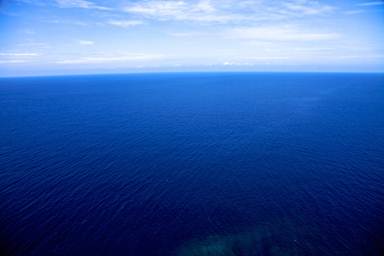

Energy
Greenpeace Launches High Tech Investigation Into Radiation Impacts of Fukushima Disaster on Pacific Ocean
Greenpeace Japan today announced it is conducting an underwater investigation into radiation contamination from the Fukushima Daiichi nuclear plant into the Pacific Ocean. The survey will be conducted from a Japanese research vessel using a one of a kind Remotely Operated Vehicle (ROV), fitted with sensitive gamma radiation spectrometer and sediment sampler.
On the opening day of the investigation, Mr Naoto Kan, the former Prime Minister of Japan and leader at the time of the nuclear accident, joined the crew of the Greenpeace flagship, the Rainbow Warrior. As the country nears the fifth anniversary of the Fukushima disaster Mr. Kan called for a complete phase out of nuclear power.
“I once believed Japan’s advanced technology would prevent a nuclear accident like Chernobyl from happening in Japan. But it did not, and I was faced with the very real crisis of having to evacuate about 50 million people at risk from the Fukushima Daiichi nuclear accident. I have since changed my mind,” said Mr. Kan on board the Greenpeace ship, Rainbow Warrior. “We do not need to take such a big risk. Instead we should shift to safer and cheaper renewable energy with potential business opportunities for our future generations.”
Tokyo Electric Power Company (TEPCO) has produced over 1.4 million tonnes of radioactive contaminated water in an effort to cool the hundreds of tonnes of molten reactor fuel in Fukushima Daiichi reactor units 1, 2 and 3 [1]. In addition to the initial releases of liquid nuclear waste during the first weeks of the accident and the daily releases from the plant ever since, contamination also flows from land, particularly the forests and mountains of Fukushima, and will continue to contaminate the Pacific Ocean for at least 300 years.(2)
“The Fukushima disaster is the single largest release of radioactivity into the marine environment in history. There is an urgent need to understand the impacts this contamination is having on the ocean, how radioactivity is both dispersing and concentrating and its implications,” said Shaun Burnie, Senior Nuclear Specialist with Greenpeace Germany.
“TEPCO failed to prevent a multiple reactor meltdown and five years later it’s still an ongoing disaster. It has no credible solution to the water crisis they created and is failing to prevent the further contamination of the Pacific Ocean.”
The investigations will continue into March and will take place along the coast of Fukushima prefecture, including within the 20km radius of the Fukushima Daiichi nuclear plant. The team is working with scientists from the independent laboratory Chikurin-Shya in Tokyo, and ACRO in France. The radiation survey is the 25th the organisation has conducted into the impact of the Fukushima nuclear accident since March 2011.
“There is still no end in sight for communities in Fukushima, many of whom can’t return home due to radiation contamination. Rather than pushing for the restart of nuclear power, the Japanese government should put these people first and focus on managing the Fukushima Daiichi site,” said Mamoru Sekiguchi, Energy Campaigner with Greenpeace Japan. “Many people in Japan have rejected nuclear power and are demanding the only safe and clean technology that can meet Japan’s needs – renewable energy.”
Only three of the 54 commercial nuclear reactors that existed in Japan in March 2011 are currently operating. The Japanese government has set an unrealistic target of 35 reactors to be operating by 2030, despite multiple technical issues and citizen led legal challenges threatening the revival of a nuclear “renaissance” in Japan.


 Environment10 months ago
Environment10 months agoAre Polymer Banknotes: an Eco-Friendly Trend or a Groundswell?

 Environment11 months ago
Environment11 months agoEco-Friendly Home Improvements: Top 7 Upgrades for 2025

 Features9 months ago
Features9 months agoEco-Friendly Cryptocurrencies: Sustainable Investment Choices

 Features10 months ago
Features10 months agoEco-Friendly Crypto Traders Must Find the Right Exchange






























